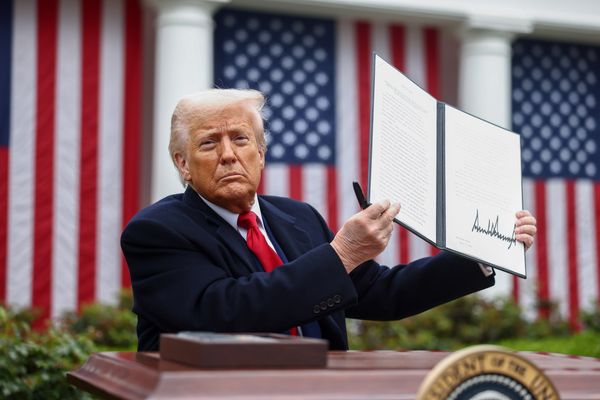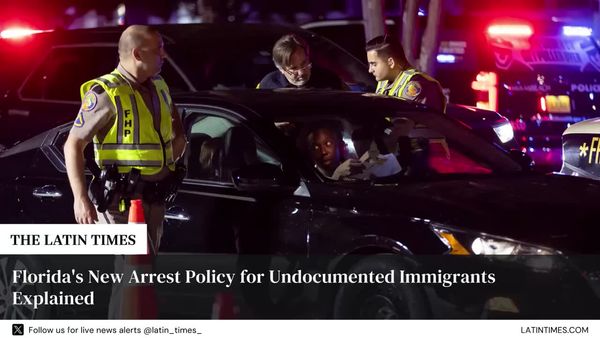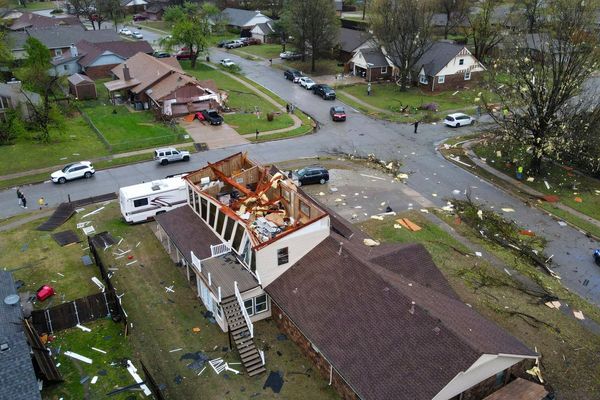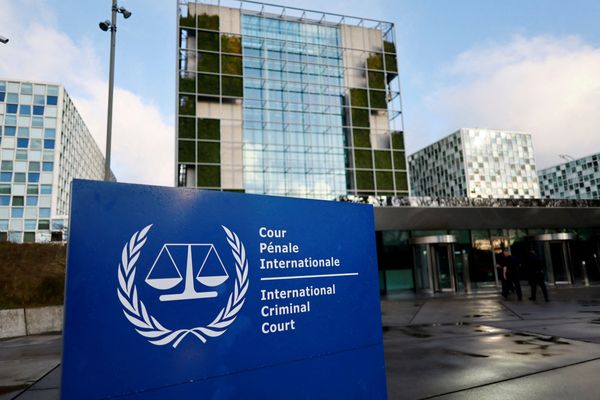
Sheriffs are unique figures in American politics and American society — but not in the way that many people, especially on the far right, would have you believe. The right-wing conception of the "constitutional sheriff" runs up against the fact that the word “sheriff” appears nowhere in the U.S. Constitution. It's mentioned in many state constitutions, but not all of them: In fact, Connecticut, which dubs itself the "Constitution State,” has abolished the office altogether. But the myth endures for a reason, reflecting the fact that county sheriffs, while almost always elected officials, are generally not well integrated into the fabric of government with its multiple paths of checks and balances.
As a result, local sheriffs have often been able to resist various reform efforts over the years, and the most recent wave of criminal justice reforms have not been an exception. The anomalous and isolated status of sheriffs is reflected in media coverage and academic research as well. Individual sheriffs like the notorious Joe Arpaio, former sheriff of Maricopa County, Arizona, may gain significant local or even national attention, but consistent, systemic scrutiny is rare. So "The Power of the Badge: Sheriffs and Inequality in the United States," a new book by political scientists Emily M. Farris and Mirya R. Holman, is long overdue.
It begins with a historical overview, then moves on to examine the county sheriff as an elective office, and how that status differs in practice both from what sheriffs themselves may claim and what democratic theory suggests. American county sheriffs are 98% male, a marked contrast to elected district attorneys, almost one in four of whom are women. That leads into an exploration of the ways sheriffs exercise and expand their authority, which sets the stage for the theme suggested by the book's subtitle: how the sheriff's office perpetuates inequality in a many areas, especially regarding violence against women, traffic enforcement and immigration.
Farris and Holman clearly take a critical view of sheriffs past and present, but they're not rigidly unsympathetic. Although the sheriffs and their practices skew strongly toward white male conservative defenders of existing power structures, there's significant variation to be found, and their discussion is appropriately nuanced. But the big picture is clear: Nationwide, the sheriff's office is long overdue for reform, particularly in light of the right-wing radicalization of many sheriffs in rural areas. The book's final chapter examines the prospects for reform, which are less than promising. Raising awareness of the problem, as this book surely ought to do, is the first step in changing what’s possible.
I recently interviewed co-author Mirya Holman, an associate professor at the University of Houston's Hobby School of Public Affairs, via Zoom. This transcript has been edited for clarify and length.
Your first chapter looks at the sheriff's office in the larger context of U.S. history. You have sections addressing the era of slavery and Reconstruction, the "Posse Comitatus" movement and the recent phenomenon of the "constitutional sheriff." We could easily spend the whole interview asking about this chapter, since it covers so much ground. Let me start by asking about the main lessons we should learn from that history. What are the important patterns that emerge?
One key takeaway for me is that sheriffs have regularly used social control in communities as a tool to make sure that some groups of people remain in power and other groups of people don't have access to power. If we think about sheriffs' role in slavery, for example, sheriffs were one of the primary offices engaged in enforcing runaway-slave acts, financially benefited from capturing individuals who had fled slavery and regularly engaged in actions to ensure that white people and communities were able to have power and Black people were not able to have power.
If we look at the role that sheriffs play as the U.S. expands westward, they again played a central role in assuring that some groups of people — particularly white people and white people with access to property — have the ability to retain their power. So we see, for example, sheriffs play a role in helping business owners squash union movements or organizing efforts. In Colorado, sheriffs are central actors in making sure that miners don't have the capacity to fight against people who own the land. When we move forward into current-day America, even something as simple as the role sheriffs play in civil asset forfeiture, or the role of sheriffs in enforcing evictions, reinforces this idea that this is a tool used to keep a particular power balance in society.
Your second chapter chips away at one of the major justifications sheriffs rely on, the fact that they are generally elected officials. You find that sheriffs are highly unrepresentative of the population as a whole: More than 90% are white, less than 2% are women, 0.2% are women of color. They're overwhelmingly conservative Republicans, and only 1% identify as liberal. You also look more specifically at sheriffs relative to the specific counties where they're elected. What did you find there?
We find over and over again that the modern-day sheriff is unrepresentative of the county that he serves. I'm going to use "he," because, as you say, most sheriffs are men. We look at this in a couple of different ways. First we say, OK, is it really true that they're unrepresentative? If we look at places where there's electoral competition, are sheriffs more representative? That's not what we find. If we look at ideological representation, again what we see is this rightward skew where sheriffs are reliably more conservative than the counties they serve, which means that counties with liberal residents are regularly not represented by the sheriff's office of sheriffs.
You find that sheriffs tend to have uncompetitive elections, with a shallow field of challengers. Sheriffs tend to serve decades in office and routinely select their successors, effectively creating dynasties of closely controlled power. What are the most important factors involved in preventing elections from being a source of accountability, as they are supposed to be?
Voters have to be able to choose between candidates in order for elections to serve as a way of changing anything. But we often see in sheriff elections that there is only one person on the ballot, or that electoral competition is sometimes in the primary election and in a general election the sheriff will be unopposed.
We argue that there are a couple of factors here. One is that most sheriffs worked in their office before the became sheriffs, as a deputy or a jailer or a staff member. So just imagine: If you wanted your boss' job, how would you interact with that person? And how would your boss treat you if they thought you wanted their job? And if, when you got their job, they would no longer have a job? They're not going to be promoted, because sheriffs are the end of the line in county government. So we find that sheriffs engage in a variety of actions to curate the pool of potential challengers.
They might identify people where they think, "This guy is going to be a good sheriff, so I want to make sure that he's under my wing. When I am finally ready to retire, I'm either going to endorse this guy or I'm going to retire before the end of the term and appoint this person to fill the rest of it, so he's the incumbent when the next election comes around." It's a regular pattern we find, that sheriffs resign before the end of their term so they can hand-pick their successor in the next election. It means there is not really the opportunity for change in elections. Either it's just the same guy running over and over again or it's a slightly different guy, but it's the guy that the previous guy picked. So we have this unbroken chain where we rarely see dramatic changes in who's going to hold the office.
What happens when a challenger does emerge?
One thing we find is that if sheriffs have an internal challenger, meaning that somebody from their office runs against them, and the sheriff wins, they tend to punish the people that work for them. One interesting thing about the office, from the perspective of power, is that sheriffs are both executives — they're elected and they have a lot of control over their office, they can set policy — but are also fundamentally bureaucrats. They manage a large set of employees, they make bureaucratic decisions about how the office is run, how the jail is run. So if a sheriff is mad about somebody challenging them, they punish that person. Sheriffs are regularly accused of retaliation by employees who run against them for the office. We see through data that when sheriffs are challenged internally, they subsequently reduce the pay of people who work for them. They essentially are, like, "Hey, you challenged me, now I'm going to get you back.”
Your third chapter is about sheriffs’ authority as elected officials. If their goal is to get re-elected, you write, "this is achieved by sheriffs increasing their authority and decreasing their accountability." What are the most significant things they do to increase their authority?
There are lots of ways that sheriffs expand what they do. We could call it mission creep. Broadly, sheriffs are county-level law enforcement officers. We might think of that as a very narrow set of tasks, or we might thing of it as extraordinarily broad. Sheriffs, particularly in rural areas of the United States, often think about this as a very broad set of tasks associated with law enforcement.
You and I might think, well, law enforcement, that does not include mosquito control, right? But the sheriff of Orleans Parish, Louisiana, would disagree: They breed fish and have boats to engage in mosquito control in that parish. Or we might think that sheriff's deputies primarily drive cars around, but many sheriffs also have boats to engage in watercraft control, they have airplanes and helicopters, they engage in a wide set of emergency services. You might look at natural disasters as an example where sheriffs radically expand their services, and often don't contract that after the natural disaster. Sheriffs are also recipients of military grants and military equipment.
Also, sheriffs run jails, and there's a lot of service expansion around jail maintenance. If you think about criminal justice reform and you're interested in the quality of life that incarcerated individuals have, one way to improve that is to offer more services: mental health care, education, work release programs. All of those are consistent with reforming our criminal justice system, but also involve expanding the sheriff's authority. So the sheriff goes from running the jail to being the primary mental health care provider in the county, or the primary person that provides job skills. The portfolio of things that office does gets larger and larger.
In Chapter 4, where the themes are inequality, autonomy and authority, you examine the influence of sheriffs’ attitudes in three arenas where they have significant autonomy: violence against women, traffic enforcement and immigration. What are the main takeaways? Let's start with violence against women.
We use data from two different surveys where we ask sheriffs themselves about their own individual attitudes. For example, what are your attitudes about women's equality? What are your attitudes about the status of women in society? Do you endorse what scholars call domestic violence and rape myths? These are common misconceptions about the sources of violence against women or interpersonal violence. Think about a phrase like, "Women can choose to leave their abusers anytime. They just decided not to." How much do you agree with that statement? Then we ask them about the services they provide to victims of interpersonal violence and sexual assault. One thing that we consistently find in this area, and also in traffic and immigration, is that the sheriff's own attitudes really matter in shaping the kinds of policies that their offices produce.
So in this circumstance, sheriffs who have more negative views about women in society, who endorse these myths, are less likely to say that they offer victims of interpersonal violence services like access to shelters or information at the hospital or transportation away from an abuser. These are really important things for women who are experiencing interpersonal violence, and our findings suggest that it really matters.
How do sheriffs' attitudes translate when it comes to traffic enforcement?
There is this long history of traffic enforcement being used as a tool to engage in disparate enforcement of laws against Black and brown individuals, and we know this is one area where discretion really matters for the police. A law enforcement officer can choose whether or not to pull you over, whether or not to write you a ticket or arrest you. We find sheriffs that have more negative attitudes toward Black people and immigrants are more likely to say that their office doesn't have policies around racial equality and arrest, and are likely to say that they oppose those kinds of interventions. Again, this is a situation where the individual attitudes of the sheriff then influences how their deputies engage in law enforcement in their communities.
What do you find with regard to immigration law enforcement?
This is a really interesting policy venue for sheriffs. In general, Homeland Security and Border Patrol do not have the resources that they would need to actually enforce immigration laws. They're both relatively small agencies. Border control is largely concentrated on the borders themselves, and one evolution of the policy over the last 40 years or so has been this top-down deregulation of immigration authority to local enforcement. Sheriffs are one of the primary tools of that enforcement, via jails and arrests.
So let's say you are in this country without the legal right to be — you overstayed your visa, for example. Most of the time you are not engaged in any action that is going to have your status in the community checked, except when you engage with law enforcement. Here again, discretion plays a role. So we asked sheriffs a variety of questions about their attitudes about immigrants. For example, “Do immigrants take away more than they give back to society?” And then we ask them about a whole bunch of points of contact between their deputies and the community: At what point do you check the immigration status of individuals? This includes everything from somebody being a witness to a crime to a traffic stop to being booked for a non-felony offense to being booked for a felony to post-trial booking in the jail.
We would expect that this check-in with ICE about whether or not somebody's been flagged would happen when somebody's actually in jail. But we find that sheriffs who have negative attitudes about immigrants say their deputies are much more likely to check the immigration status of witnesses to crimes and people whostopped for traffic issues, as compared to those sheriffs who have more positive attitudes towards immigrants. This has real consequences, if we think about the willingness of members of the community to interact with law enforcement, or to call the police when there's an emergency. If you think your immigration status is going to be checked, you're not going to call the cops to report a crime.
In Chapter 5, on the "radicalization" of county sheriffs, you look at how that has unfolded over the last half-century through right-wing recruitment efforts. You begin in the 1970s with the Posse Comitatus movement, which then led to the "constitutional sheriff" movement. What were the key moments in this development?
In the 1970s, a variety of what we might call modern-day militia movements that emerged. Some emerged in anger over the civil rights movement and are explicitly racist or white supremacist, some are neo-Nazi, some are explicitly focused on the American West. During this time, members of these movements identify the county sheriff as this ideal locally elected official who has a lot of autonomy. This is where the beginning of the idea of the constitutional sheriff emerges, where sheriffs somehow have this unique constitutional power.
Just as a side note, sheriffs don't generally have any unique constitutional powers. Lots of offices have constitutional powers, and sheriffs are sometimes among them and have some designation in the state constitutions. But this is not a unique sheriff thing.
The founder of the Posse Comitatus movement, among other people, worked to promote this idea that sheriffs are this last line of defense against the overreach of the federal government. We should try to elect people as sheriffs, in their view, who are going to defend their communities against any efforts by the federal government to take guns away, or try to enforce civil rights rules. Eventually, rules about federal land management in the West get wrapped up in this. During that time, I would not call sheriffs active participants in this movement at all. There were quite a few sheriffs saying, "Please stop mentioning my name. Stop talking about this." But over time, that militia movement sort of dies out. With the Oklahoma City bombing and Timothy McVeigh, many militia movements go underground and become less publicly visible, and focus way less on sheriffs.
We see the re-emergence of these ideas during the county rights movements in the 1990s, but we don't see the ideas gain national prominence until the rise of Richard Mack as an intellectual leader of the right after Barack Obama's election as president. Mack himself has said he was inspired by the idea that Obama was going to come in and do all this crazy stuff. So Mack, who was a former county sheriff in Arizona, used the notoriety that he has from being involved in a gun rights case to go on the Tea Party circuit and develop a much broader following of sheriffs, making the argument that sheriffs have this unique responsibility to protect their residents against the overreach of the federal government.
Then we see a lot of effort around the post-Sandy Hook discussion of gun control, with sheriffs emerging as vocal opponents to any kind of federal gun control. This evolves into anti-COVID restrictions, and along with guns and federal overreach that has continued to be a core component of this right-wing movement of sheriffs who have taken up this mantle, claiming, "We're a unique office. We have this unique responsibility."
And you do see that right-wing extremism reflected in many sheriffs' views today.
Sure. If you ask sheriffs in surveys whether or not they believe in statements like "sheriff have a responsibility to interpose against federal overreach," or that the federal government should have to request permission from the sheriff before they go into a county, we see high rates of sheriffs agreeing with these statements. These are also highly correlated with sheriffs saying that they won't enforce gun control measures, or that they oppose mask mandates.
In Chapter 6, you turn to a range of different “tools for reform,” including elections, civilian review, the appointment of sheriffs, investigations and various state and federal policies, as well as the abolition movement. As you lay these options out, they all have serious limitations, though some incremental changes have been made. What lessons do you draw here?
Change is really hard. There are more than 3,000 sheriffs in the United States, and the tools that seem to be the most effective are also the ones that are most limited in scope. If we think about elections as a tool to shape who sheriffs are and their policies, OK, that's great. We need to encourage more people to run for the office. But that's highly localized, right? It's hard to identify people in 3,000 counties who have the interest, capacity and experience to run for the office. The same goes for something like civilian oversight. It's a tool that might matter, but it has only been rolled out in very few places and sheriffs have been very effective at reducing the implementation of effective civilian oversight.
One common problem seems to be that sheriffs really are outside the networks of accountability that encompass government at different levels, from national to local. It seems as if we need the kind of information you provide to become much more widely known in order to build a movement for accountability. Maybe we need to develop alternative ideas of what we want on the county level, for example, more public health services rather than law enforcement.
Yes, I agree. Sheriffs operate in this unique space in that they don't have horizontal accountability. Think about state legislatures. If we are mad about what a state legislature does, we might think about the governor serving as a form of accountability, or an independent state administration governed by bureaucratic rules, or the judicial system. For sheriffs, there are parallel bodies like county commissions, but they're seen as independent, not as one overseeing the other. County commissions in most states have no power to check the decisions made by the sheriff. So they lack horizontal accountability, and often lack vertical accountability too. Some of that is by their own efforts, by saying to state and federal governments, "You can't tell me what to do." But it's also general public blindness to what happens in this office and the fact that there's no oversight, particularly in rural areas without robust media networks. You might have civilians who are identifying problems and writing blog posts or yelling on Reddit, but there's no way to convert that to any kind of change.
I would support any effort toward stronger institutionalization of services — health services, mental health care, job training, post-incarceration care — separate from the criminal justice system. What we see overwhelmingly is that, particularly in rural America, the county sheriff and the jail has become the primary site for a lot of these services, particularly to vulnerable populations, because there's nobody else to do it.
If you live in a rural area and somebody in your life is in a mental health crisis, the sheriff is the only person to call in most places. They're going to take that person to jail and then they may provide some kind of mental health care, or transport them to a faraway mental health facility. We could interrupt that pattern if we had more robust mental health care in rural America. It's the same thing with interventions around the homeless population. All these things have been shuffled into the jail system. The sheriff provides these services and thus expands his power. If we provided those services separate from from the criminal justice system, that would circumvent that process.
Finally, what's the most important question I didn't ask, and what's the answer?
One thing I think a lot about is: What does a good sheriff look like? One thing I think is important is that sheriffs are willing to give away their power. You see effective and sensible sheriffs who are not just invested in expanding mental health care in the jail, but in interventions that stop people from going to jail entirely. Sheriffs who support alternative services and housing-first policies, policies that are not aimed at, first you get someone to the jail and then you provide services. Those are the kind of sheriffs that people should be interested in supporting.







